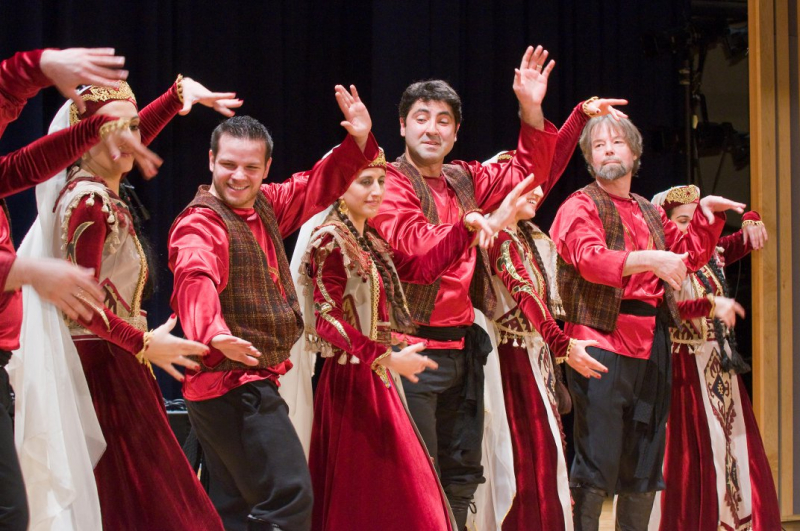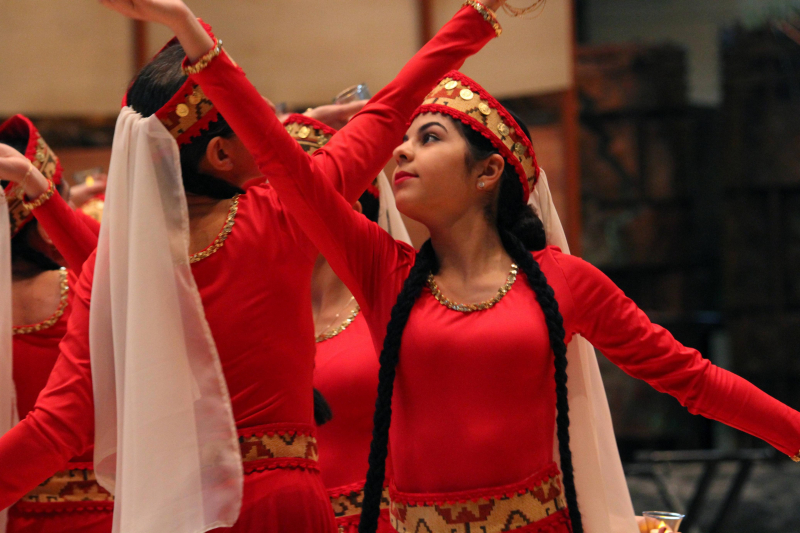Traditional Dance
Armenian dance traditions are among the oldest, richest, and most diverse in the Near East. There are rock paintings portraying scenes of country dancing dating from the fifth to third millennia B.C. in Armenia's higher highlands. These dances were most likely accompanied by specific melodies or musical instruments. Moses of Khorene (Movsés Khorenats'i) had heard in the 5th century how the old descendants of Aram (Armenians) reference these things (epic tales) in ballads for the lyre and their songs and dances. This can be seen as one of Unique Cultural Characteristics In Armenia.
The martial dance Yarkhushta is one of the most energetic Armenian dances. It is thought that Yarkhushta originated in the early Middle Ages because it is described in the works of Movses Khorenatsi, Faustus of Byzantium, and Grigor Magistros. Armenian soldiers have traditionally performed Yarkhushta before military engagements, partially for ritualistic purposes and partly to cast off anxiety and build battle spirit.
Men execute the dance in couples, facing each other. The essential feature of the dance is a forward movement in which participants approach one another quickly and violently clap onto the palms of dancers in the opposite row's hands.













